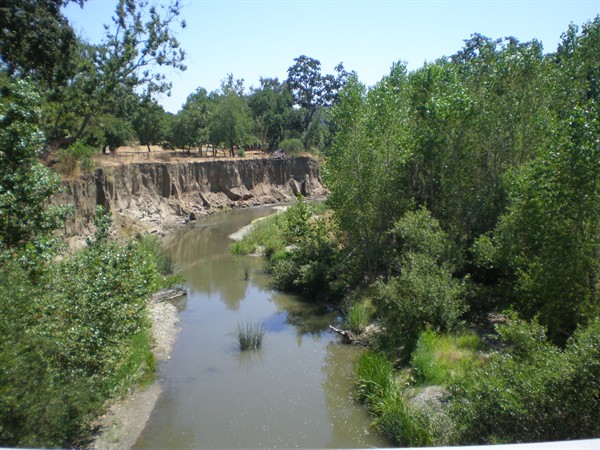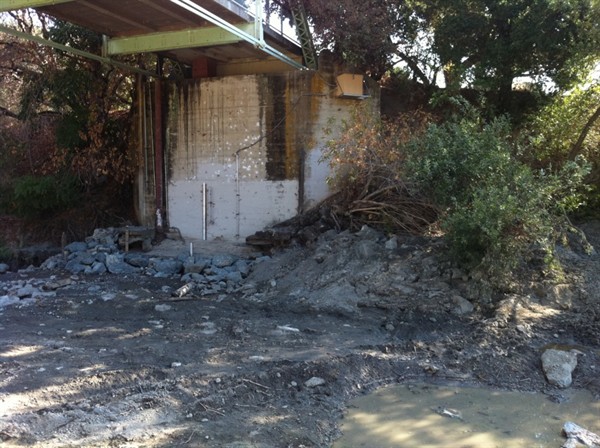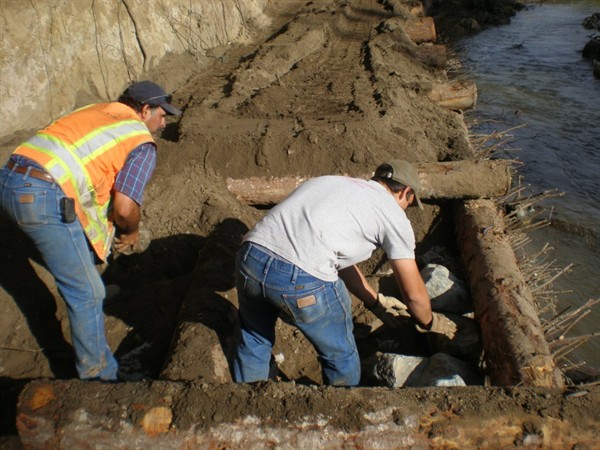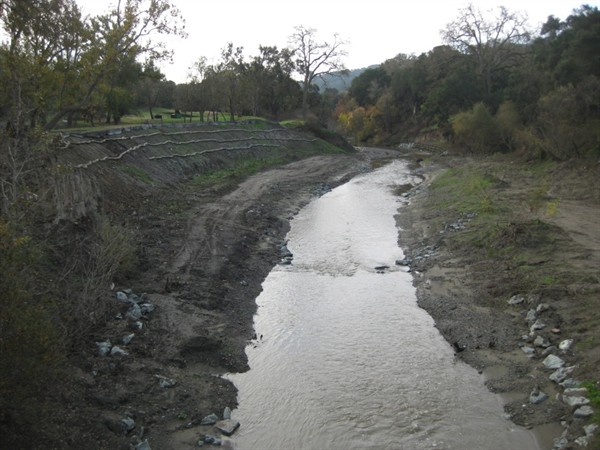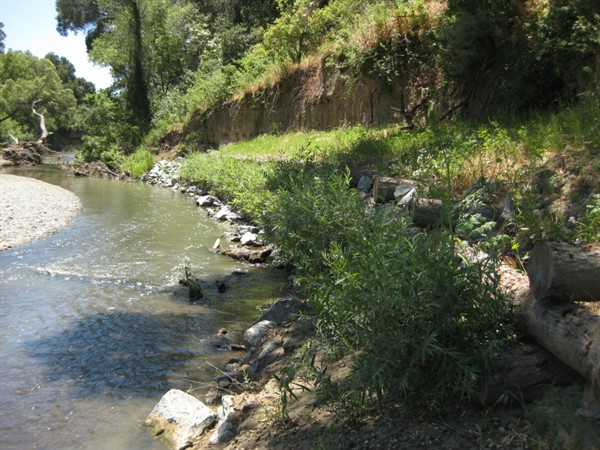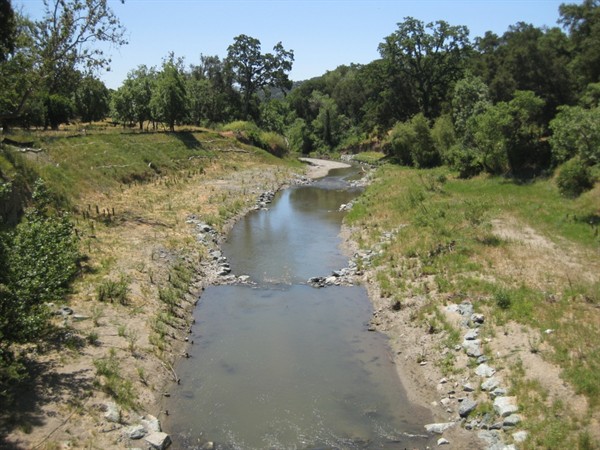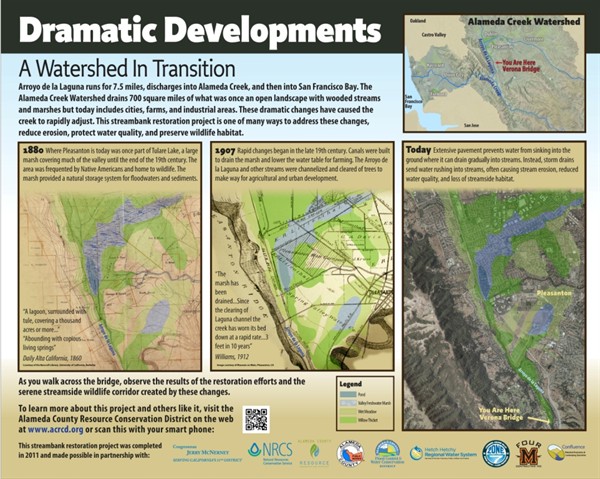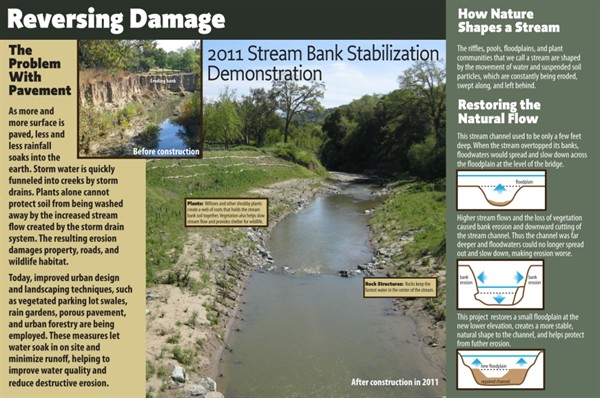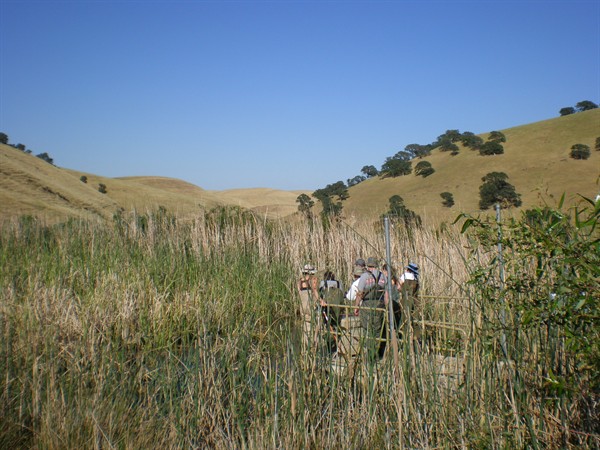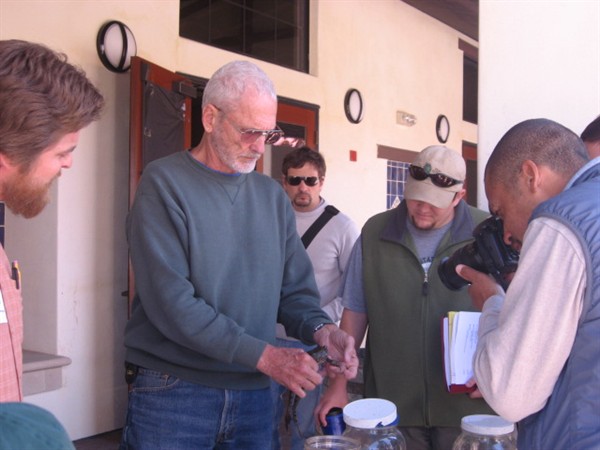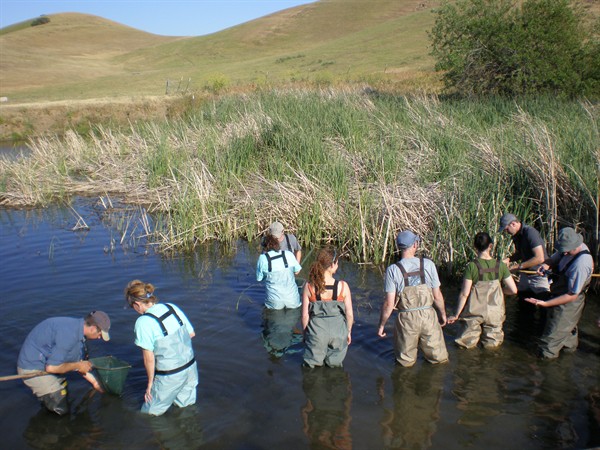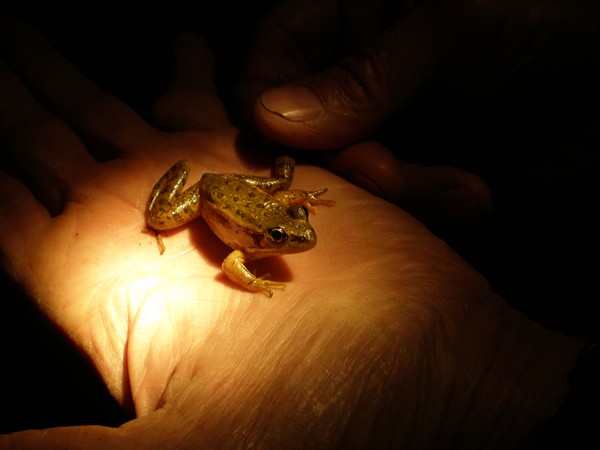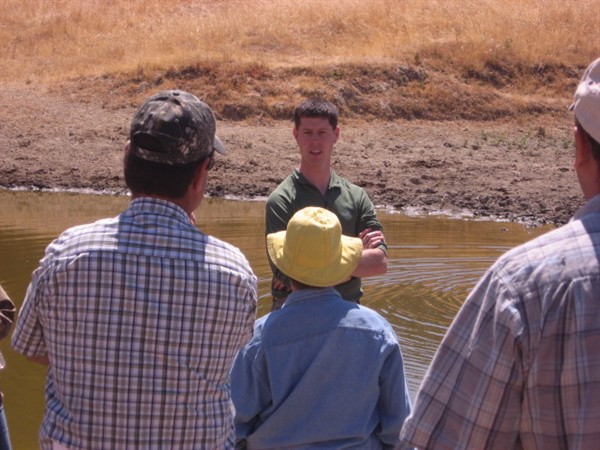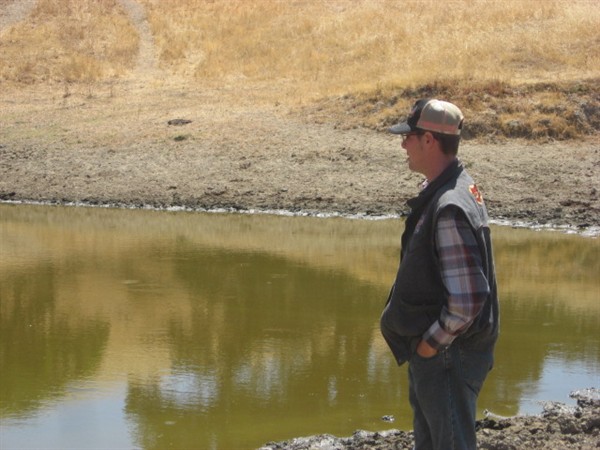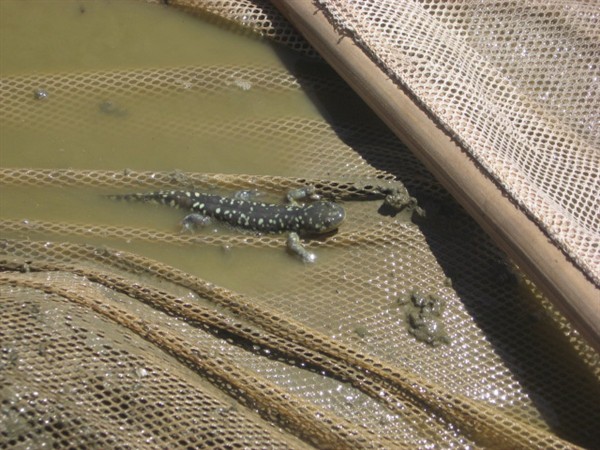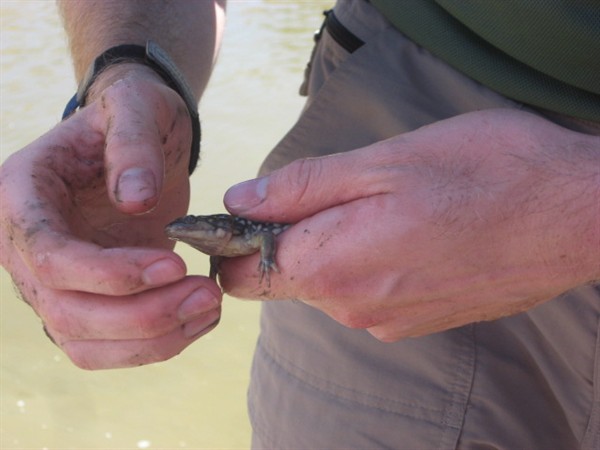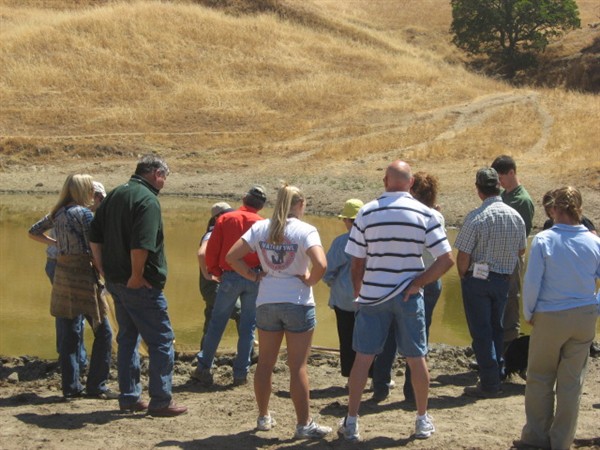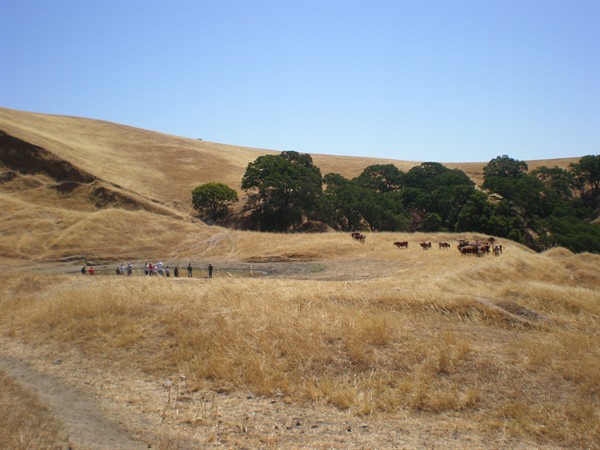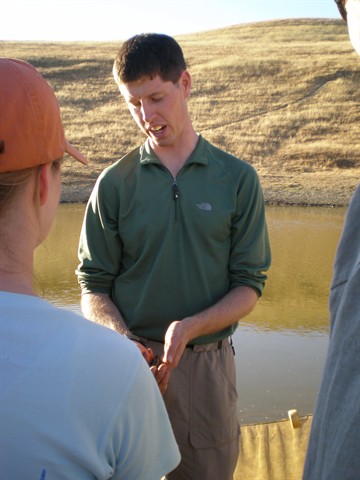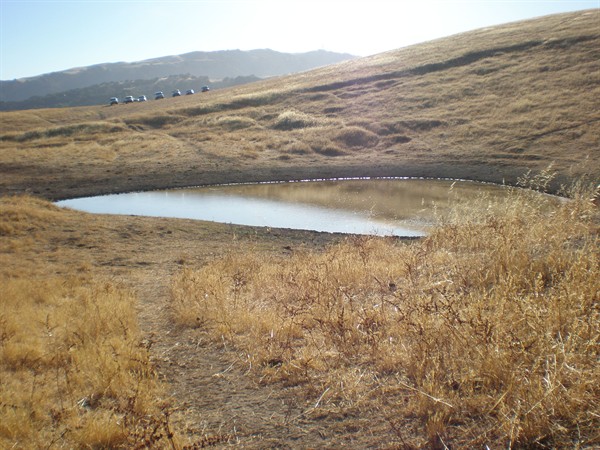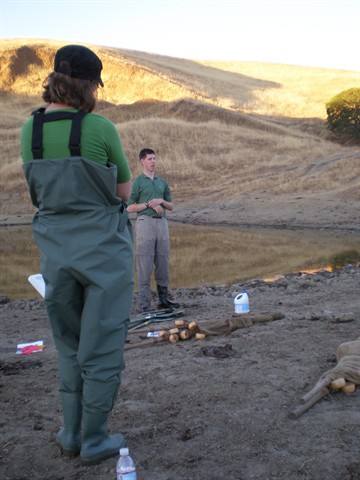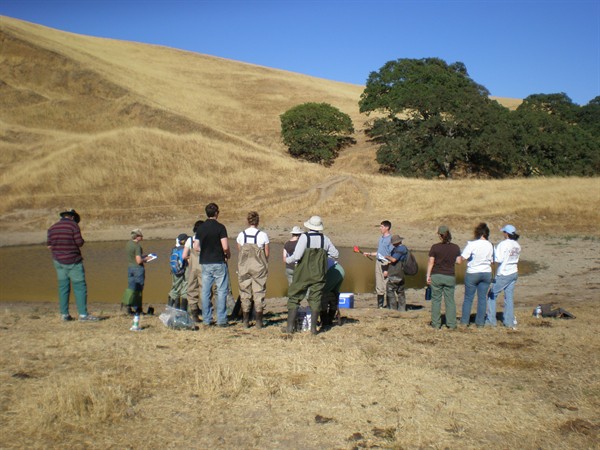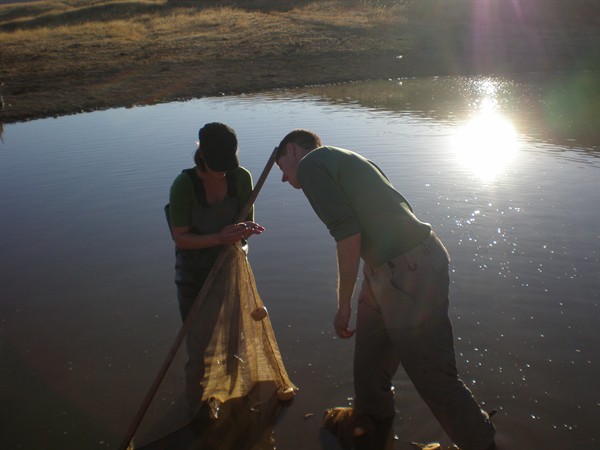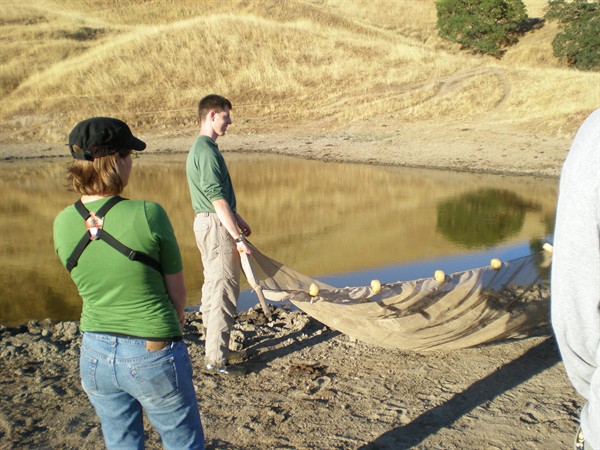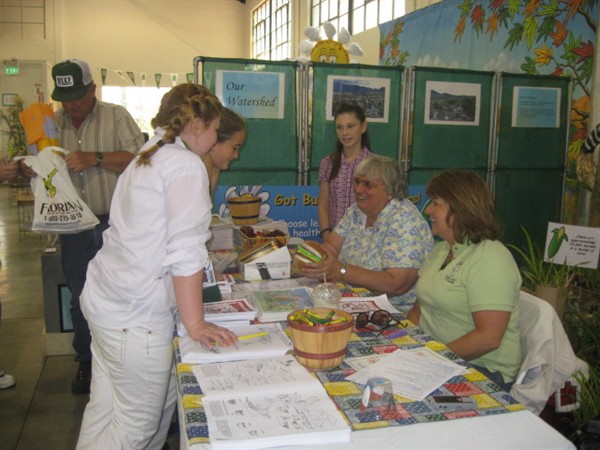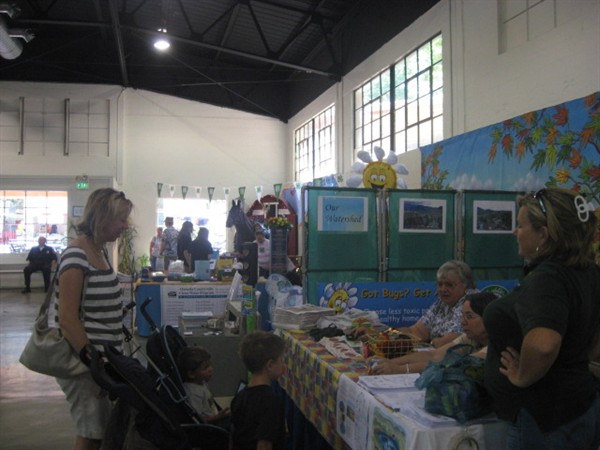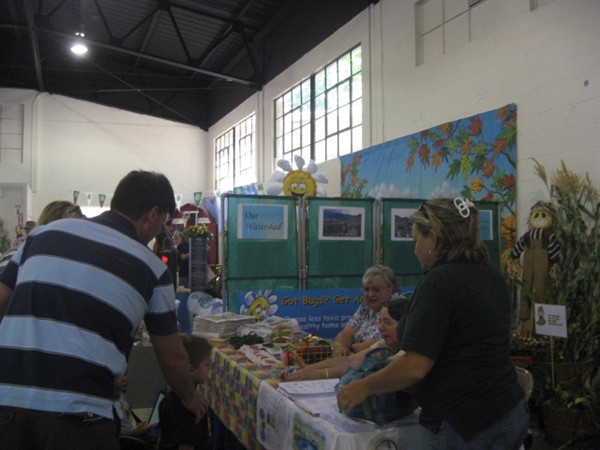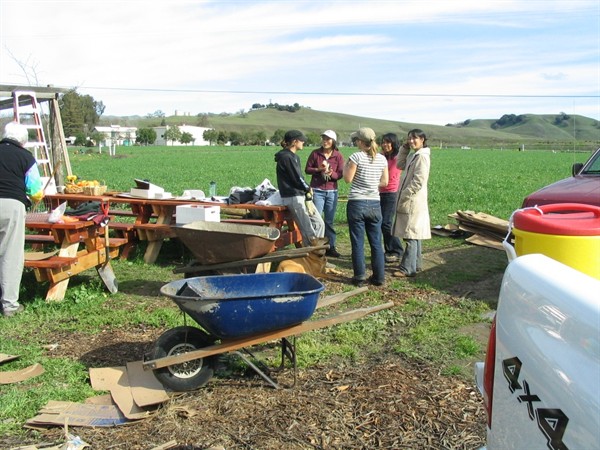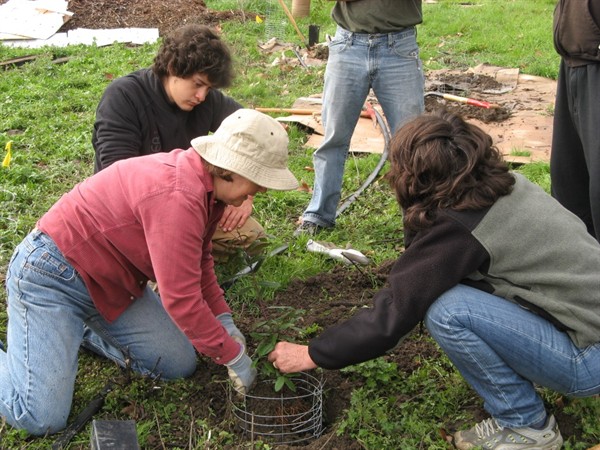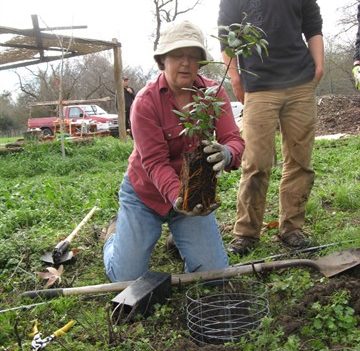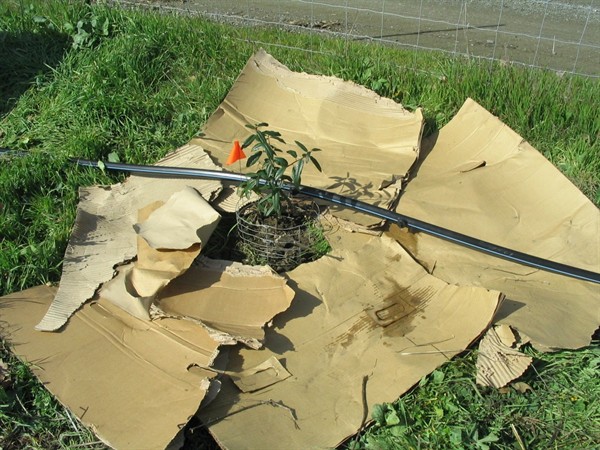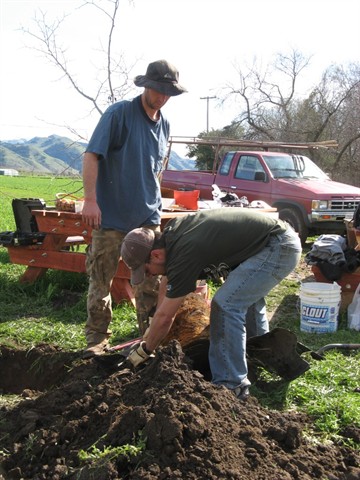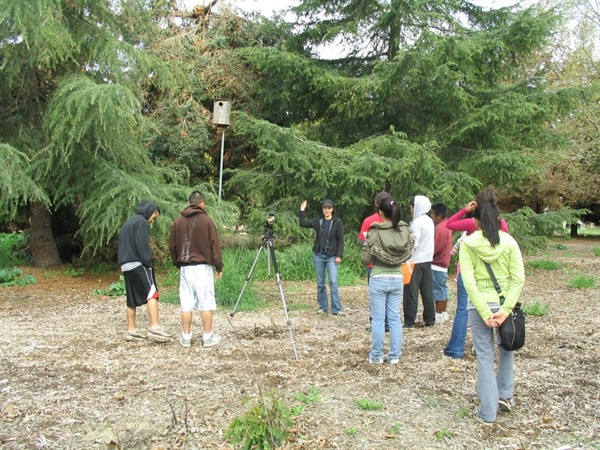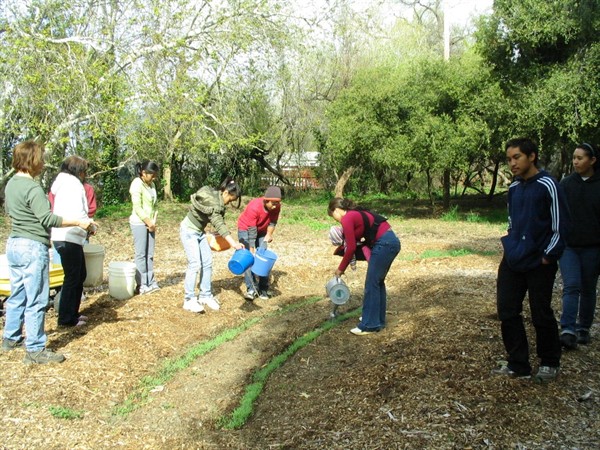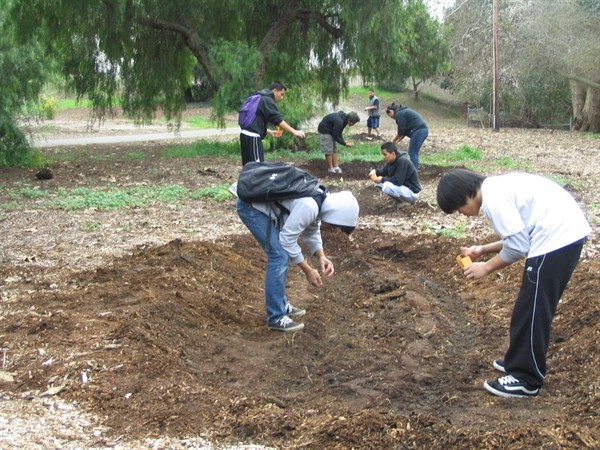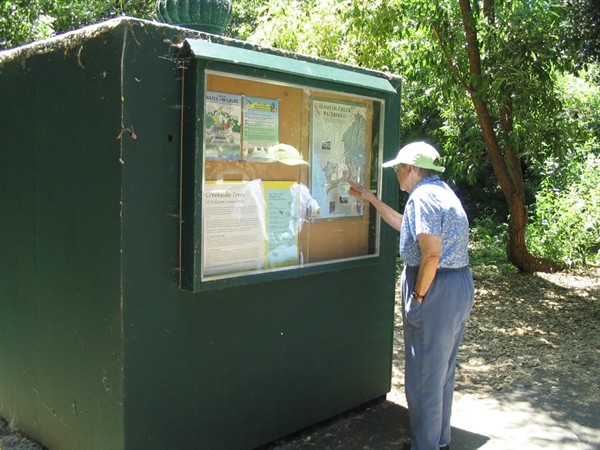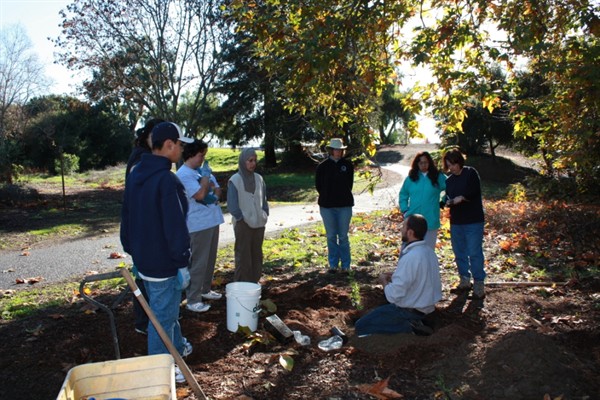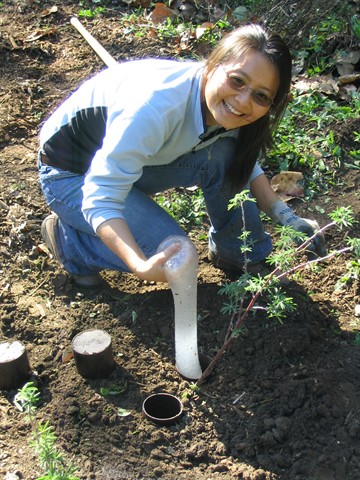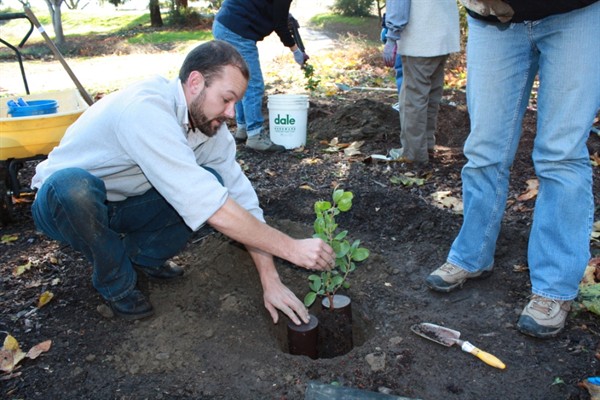Projects
Agriculture
Beginning Farmer Training
Farmers and ranchers are some of the most important stewards of our natural resources while contributing to the economic vitality of our rural (and, increasingly, urban) communities. Yet, the average age of our agricultural producers is nearly 60, leaving many to wonder who will serve as the next generation of stewards and food producers. The Alameda County Conservation Partnership received funding to educate beginning farmers and ranchers.
The Conservation Partnership facilitated:
- Classroom and Field based workshops
- Technical assistance for beginning farmers and ranchers
- A mentorship program, where beginning farmers and ranchers would be paired with a more experienced mentor.
Through workshops, field days, technical assistance and mentorship opportunities, the Conservation Partnership, in combination with our partner organization, SAGE, provided resources and training to help build the next generation of successful and sustainable farms and ranches.
Project year(s): 2011 – 2018
Project Status: Completed
Primary Contact(s): Susan Ellsworth
Partners: SAGE
Links: Start2Farm, CA FarmLink
Rangelands
Rangeland Resilience
Alameda County Rangeland Resilience Pilot Project (with funding from a State Coastal Conservancy – Climate Ready grant) – Officially launched in 2015, the Rangeland Resilience Project will improve distribution of livestock water sources on public lands to enhance habitat, grazing operations, and resilience under climate stressors (e.g., drought). The Conservation Partnership is collaborating with East Bay Regional Park District, San Francisco Public Utilities Commission, and a grazing manager to develop water where it is needed for livestock to manage vegetation in the Sunol Regional Wilderness. Three spring re-development projects and associated livestock troughs have been planned. A fourth spring and at least two pond restoration projects are in development.
The Project seeks to:
- Repair and redistribute water resources on naturalized annual grasslands in the San Francisco Bay Area’s East Bay hills,
- Help maintain appropriate grazing levels for rangeland ecosystem health.
- Provide resiliency to disturbances including climate change and drought.
|
Water distribution is a valuable tool for regulating grazing, as cattle movement across a landscape is closely tied to the location of water (Ganskopp 2001, Barry et al. 2016). When water is not adequately distributed, grazing may become concentrated near available water sources, while forage in areas without water may become overgrown and prone to encroachment by undesirable vegetation, reducing habitat for some
wildlife (Barry et al. 2015, 2016). As water sources become less reliable in the face of predicted climate stressors, more livestock water options must be made available on California’s rangelands.
Comprised of three major components, the Project is aimed at increasing resilience to climate uncertainties and improving grazing practices through:
- Rehabilitation and redistribution of water resources — focusing on developed springs and existing livestock ponds
- Monitoring of rehabilitated areas for efficacy of watering facility improvements
- Outreach to inform land managers of the Project outcomes, and how these outcomes might guide best management practices for grazing on naturalized annual grasslands
Implementation year: 2015 – Present
Project Status: Ongoing
Primary Contact(s): Ian Howell
Partners: SFPUC, East Bay Regional Parks
Links: Grasslands Magazine, Sunol Signage
Upland Watering Trough and Riparian Exclusion Fencing
This is one example of many similar projects that the Conservation Partnership has helped to fund, facilitate, and implement.
This project site is located in the Arroyo Mocho sub-watershed on privately-owned rangeland. Water facilities for livestock are limited to lowland areas, making it difficult to distribute livestock on the property’s uplands. The creek is a primary water source in the lowlands, and livestock impacts to the riparian area decrease vegetation cover and appear to be contributing to streambank sloughing and erosion.
Results of this project include:
- A new water source for livestock and wildlife.
- Improved grazing distribution.
- Improved riparian habitat.
The project resulted in the installation of a new off-stream livestock watering trough in an upland field that has abundant forage, but limited water. The placement of the new water trough on high ground allows better grazing of available forage and provides an alternative to the creek. A riparian exclusion fence will be installed along the creek to limit livestock access to steep streambanks and to create a buffer area. Vegetation cover is being monitored, and permanent photograph monitoring points have been established. The project is supported by EPA San Francisco Bay Water Quality Improvement Fund, and the landowner.
Implementation year: 2014
Project Status: Monitoring & Ongoing
Primary Contact(s): Ian Howell
Partners:
Links: SF Bay WQI
Watershed Health
Altamont Creek Willow Demonstration
The Altamont Creek Willow Demonstration Project is one of two projects undertaken in partnership with Zone 7 Water Agency on Altamont Creek. This reach of Altamont Creek experiences streambank erosion and streambed incision that will eventually threaten infrastructure and property, including Zone 7’s service road, which also functions as a recreation path. Shelterbelt Builders, Inc. was contracted to harvest willows and use the cuttings to plant stakes, poles, and fascines at critical out-bends according to designs developed by ACRCD and NRCS technical staff in collaboration with Zone 7 Water Agency. Some of the live willow plantings have survived and rooted, increasing streambank stability and providing structure even where plantings have not survived.
Implementation occurred from January 11-15, 2016. Harvesting was conducted on Contra Costa County Flood Control property in North Richmond, California (Wildcat Creek) with permission from the County and from East Bay Regional Parks District (EBRPD), which maintains a trail right-of-way adjacent to harvest areas. ACRCD and NRCS staff oversaw harvesting and installation. Assessments of plant growth and streambank stability have been ongoing throughout 2016 and 2017, and permanent photograph monitoring points have been established. The project was supported by EPA San Francisco Bay Water Quality Improvement Fund grant no. W9-00T94801 and Zone 7 Water Agency.
Arroyo de la Laguna
| Above, Pre construction
Below, Post construction |
In Fall 2006, the Conservation Partnership implemented a streambank stabilization project along a 1,000-foot section of creek between Pleasanton and Sunol, a half-mile south of the Verona Road Bridge. The project was designed to reduce streambank erosion, establish vegetation, and improve riparian habitat. The Arroyo is important habitat for the Western pond turtle, a CA species of special concern. The project was a successful collaboration with San Francisco Public Utilities Commission, Zone 7 Water Agency, Alameda County Public Works Agency, the Dublin San Ramon Services District, and Alameda County Water District on this $620,000 pilot project. Hanford ARC was the contractor for the project.
In fall 2011, the Conservation Partnership implemented a streambank stabilization and willow riparian scrub restoration project along a 300-foot section of creek between Pleasanton and Sunol, near the intersection of Koopmann Road and Pleasanton-Sunol Road. The project was designed to reduce streambank erosion, establish vegetation, and improve riparian habitat. Four M Contracting Inc. was the contractor for the project.
Implementation year(s): 2006 & 2011.
Project Status: Completed
Primary Contact: Katie Bergmann & Ling He
Partners: San Francisco Public Utilities Commission, Zone 7 Water Agency, Alameda County Public Works Agency, Dublin San Ramon Services District, Alameda County Water District
Links: Fact Sheet, Fishery Info, Project Description
Fish Passage at Stony Brook
In 2016, the ACRCD oversaw the successful implementation of the Stonybrook Creek Habitat Restoration Project—designed to improve fish passage conditions within Stonybrook Creek, along Palomares Road in Alameda County. The project included the retrofit of an existing County-owned culvert and a full bridge replacement to improve access for native fish, including landlocked rainbow trout and anadramous steelhead.
Primary Contact: Hillary Sardiñas
Stream Restoration
This is one example of many similar projects that the Conservation Partnership has helped to fund, facilitate, and implement.
The Altamont Creek Confluence Planting Project involved planting cover vegetation to improve water quality along Altamont Creek (Arroyo Las Positas sub-watershed). Compaction and alkali soils make plant establishment difficult on exposed streambanks with limited topsoil and evidence of sheet and rill erosion. The area is heavily trafficked by users of an adjacent neighborhood park and multi-use trail.
The Watershed Nursery propagated plants from locally collected seeds. The East Bay Civic Corps prepared the site for planting, and community volunteers installed over 700 plants in February 2015 with the project partners and the Hands-on Conservation program. Pacheco Brothers Gardening, Inc. provided watering services during the summer season while the plants became established. The Living Arroyos program has also provided watering and maintenance assistance. Vegetation survivorship was monitored, as well as percentage vegetation cover. Permanent photograph monitoring points and monitoring transects have been established.
Implementation year: 2015
Project Status: Completed
Primary Contact(s): Drew Engstrom & Hilary Sardiñas
Partners: Watershed Nursery, East Bay Civic Corps,
Living Arroyos, Zone 7 Water Agency
Alameda County Watershed Confluence Conference
The Alameda County Watershed Confluence was a county-wide conference designed to provide a forum for local groups, community members and representatives from the public and private sectors interested in creek and watershed health to meet, network, share, and inspire new partnerships in watershed management in Alameda County. For more information on the presentations, awards, and groups involved please visit the Watershed Confluence Symposium webpage on the Alameda County Flood Control website.
For more information on the watershed confluence, please reach out.
Email: [email protected]
Implementation Year: 2018
Project Status: Complete
Primary Contact: Ian Howell
Wildlife Conservation
Fish Passage at Stony Brook
In 2016, the ACRCD oversaw the successful implementation of the Stonybrook Creek Habitat Restoration Project—designed to improve fish passage conditions within Stonybrook Creek, along Palomares Road in Alameda County. The project included the retrofit of an existing County-owned culvert and a full bridge replacement to improve access for native fish, including landlocked rainbow trout and anadramous steelhead.
Primary Contact: Hillary Sardiñas
Workshops
Alameda Whipsnake
Alameda Whipsnake (AWS) Workshop
Richmond ACRCD Workshop
Vegetation Management and the AWS
California Red-legged Frog Workshop
California Red-legged Frog Workshop
Handout from Workshop
California Tiger Salamander
California Tiger Salamander Presentation
Getting The Lease
Activities By Livestock Operators for Conservation
Developing Livestock Leases for Annual Rangelands
Grazing Leases Proposals Best Practices
Grazing Lease Proposals Commonly asked RFP Questions
Livestock Production 101
Livestock Production 101 Materials
Ranching 101
Glossary of Terms
Calendar of Events
Ranching 101 Presentation
Beginning Olive Oil Producer’s Meeting
Olive Tree Pruning Field Day
Yolo Press & Yolo Bulb Field Day
Holistic Management Workshop
Introduction to Holistic Management
Example Scenario Grazing Lease Decisions
Front Porch Farm
Grazing Leases Workshop
Root Down Farm
LandsSmart Pasture Workshop
Pigs and Trees
Acorn Ranch
Iberian Ham of Acorn in CA
Agri-Tourism Workshop
Part 1, Part 2, Part 3, Part 4, and Part 5
Frog Hollow Farm Tour
Irrigation Management Workshop & Field Day
J.E. Perry Farm Tour
MacGruder Ranch Tour
Riverdog & Free Spirit Farm
Riverdog Farm Tour and Free Spirit Farm Tour
Weed Management Workshop & Field Day
Yolo Press Farm Tour
After the Grass
Mendocino Meat Processing Assessment
Motherload Meats Report
UC Davis USDA Guide to Processing
Farm and Ranch Succession
Farm and Ranch Succession Workshop
Succession Goals Worksheet
Grassfed Beef
Grassfed Beef Presentation Part 1 & Part 2
Grassfed Beef Cost Study UCCE
Beef Marketing Alternatives
Marketing 101
Marketing Tips Sheet Part 1 & Part 2
Olive Production Basics
Olive Production Introduction to Irrigation
Olive Irrigation Presentation
Determining Soil Moisture by Feel
Rangeland Stewardship
Alameda Creek Watershed
Grazing at EBMUD
Grazing Tenant Roles by Agency
Importance of Working Landscapes
Lease Policies/Strategies for Conservation
Wildlife Habitat Presentation
Conservation Partnership Annual Meeting
Voluntary Local Program Description
Regulatory Permits for Farm Bill Programs
Introduction to Farm Bill Programs Presentation

